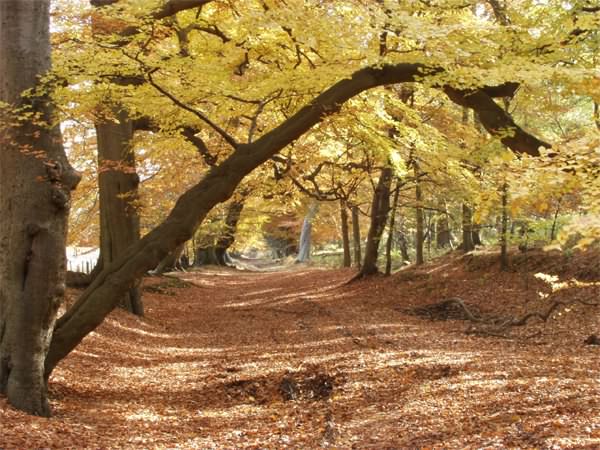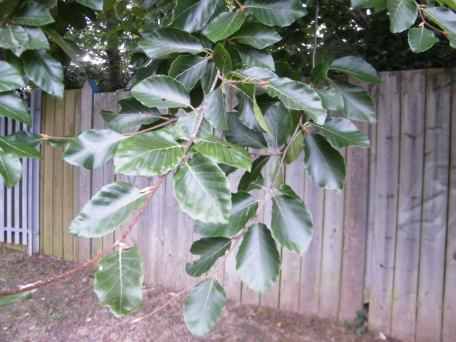
Photo ©2005 - Stuart
Wild About Britain


Beech - Fagus sylvatica
Family - Fagaceae
A native UK broad–leaved species common accounting for some 12% of the UK arboreal stock. Growing to 40m (131ft) tall and a spread to 130 feet in diameter, native of Europe usually found in large single species forests with very little else growing beneath the canopy. Ovate pointed leaves to 10cm (4in) with a wavy toothed edge usually having less than ten pairs of veins, glossy dark green above and a paler green underneath, with a covering of hair–like fibres. The leaves turn a rich golden brown in the autumn giving Beech forests a special charm and beauty. Usually growing on chalky soils the trunk is a smooth whitish grey and can frequently covered with moss and lichen. Wind pollinated flowers are small and yellow for the male and green for the female, found in separate clusters on the same tree in the spring at the same time as the leaves emerge. Fruits in groups of two or three edible nuts in a small brown bristly husk and are an excellent food source for many animals both wild and domestic. Beech nuts are used to produce an oil (yielding about 20% by volume) used for cooking, in lamps and made into a butter substitute. The cake residue after pressing can be used for cattle food. In Germany during the war years Beech leaves were used as a substitute for tobacco.
It is a straight–grained textured timber which can be brittle, it is easily turned and bends well and is widely used for furniture, flooring, veneer, constructional work and kitchen utensils. Prone to squirrel damage, Beech is covered by the EU Forest Reproductive Material Regulations with currently 22 registered stands of "selected" quality in Britain, however these stands do not yield enough seed to meet total demand necessitating seed to be imported from the continent. Beech nuts or "mast" are used in some countries as food for farm animals, in France it is used for feeding swine and fattening domestic poultry, especially turkeys and pigs which are turned into the Beech woods to eat the fallen mast, horses however should not be fed Beech mast. A tar made from Beech has antiseptic properties and has been used as a stimulating expectorant in chronic bronchitis, or as an application in various skin diseases.
 Photo ©2005 - Stuart Wild About Britain |
 |
 |
| Click any photo for a larger image - photos above ©2013– | ||
Site design ©1999– Brickfields Country Park - Privacy -